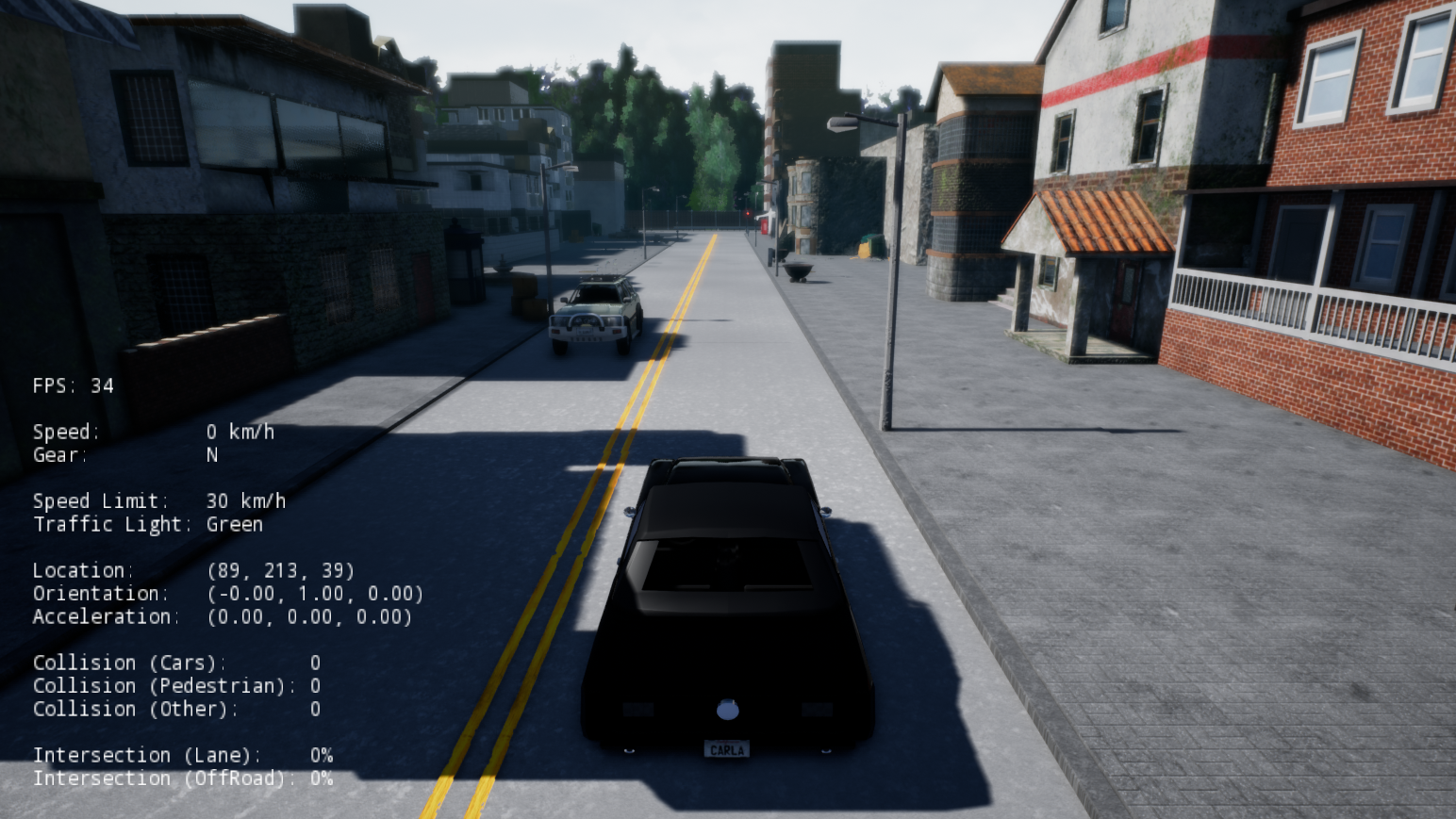Running the CARLA simulator in standalone mode
Inside the downloaded package you should find a shell script called
CarlaUE4.sh, this script launches the CARLA simulator.
Tip
Although this tutorial focuses on Linux, all the commands work as well in
Windows. Just replace all the occurrences of ./CarlaUE4.sh by
CarlaUE4.exe.
Run this script without arguments to launch CARLA simulator in standalone mode with default settings
$ ./CarlaUE4.sh
This launches the simulator window in full-screen, and you should be able now to drive around the city using the WASD keys, and Q for toggling reverse gear. See "Keyboard input" for the complete list of key-bindings.

We have currently two scenarios available, Town01 and Town02. You may want now to take a look at Town02, you can do so by running the script with
$ ./CarlaUE4.sh /Game/Maps/Town02
All the parameters like number of other vehicles, pedestrians, and weather conditions can be controlled when launching the simulation. These parameters are set in a "CarlaSettings.ini" file that is passed to the simulator either as a command-line parameter or when connecting with a Python client. This file controls all the variable of the CARLA simulator, from server settings to attaching sensors to the vehicle, we will cover all these later, for now we will just change some visible aspect in the standalone mode. For a detailed description of how the settings work, see "CARLA Settings" section.
Open the file "Example.CarlaSettings.ini" in a text editor, search for the following keys and modify their values
NumberOfVehicles=60
NumberOfPedestrians=60
WeatherId=3
Now run the simulator passing the settings file as argument with
$ ./CarlaUE4.sh -carla-settings=Example.CarlaSettings.ini
Now the simulation should have more vehicles and pedestrians, and a different weather preset.
Tip
You can launch the simulator in windowed mode by using the argument
-windowed, and control the window size with -ResX=N and -ResY=N.
In the next item of this tutorial we show how to control the simulator with a Python client.